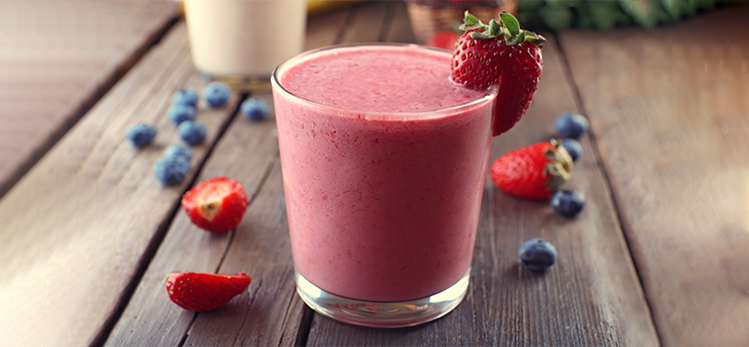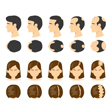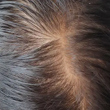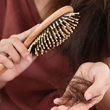Are Fruits Beneficial For Hair Growth?
You may love eating fruit salads or fresh fruit smoothies topped with nuts. But have you ever wondered – can your hair benefit from consuming these fruits? The answer is simple – yes! Many fruits are rich in antioxidants, vitamins A, E, and C, which are crucial for healthy hair. Also, many fruits contain trace minerals like biotin, zinc, potassium, and iron, which contribute to happy and healthy tresses. Read on for a list of fruits for hair growth and exciting ways to incorporate them into your regular diet.
Fruits That Offer Beneficial Results for Hair

Here is a science-backed list of fruits for hair growth that have shown exemplary results:
Indian Gooseberry
Amla fruit extracted from the Indian gooseberry plant has been used for hair hygiene for centuries. The dried fruit of amla, which is often found in shampoo and hair oil formulations, boosts hair growth and fortifies damaged hair strands. Scientific studies show that DA-5512 formulation compromising herbal extracts, including amla, is an effective remedy for hair loss.
Papaya
Papaya is an excellent source of vitamin A, an indispensable micronutrient that aids in developing and maintaining epithelial tissues, including hair. That means a deficiency of vitamin A can have a detrimental effect on your tresses. On the bright side, the required level of this micronutrient can be easily met by including papaya in your everyday diet.
Strawberry
Those bright red heart-shaped berries, apart from being a delicious snack, are jam-packed with several nutrients. This includes vitamin C, biotin, manganese, vitamin B9, and potassium. USDA states that strawberries also have small amounts of magnesium, vitamin E, and iron. Strawberries' antioxidant properties help expunge toxins from the body and safeguard against free radical hair damage. As per scientific research, its vitamin C content also helps to absorb iron, as its deficiency is linked to hair loss.

How to Include Hair-Benefiting Fruits in Your Everyday Diet
Exciting ways to incorporate fresh fruits into your diet exist aplenty. You should not limit your intake to fresh fruit slices. Keep it interesting and make fruit juices, salads, smoothies, and even fruit-infused water to bask in the benefits of fruits. Here’s how to add hair-benefitting fruits to your everyday meals:
1. Make Fruit Juices
Drink fresh fruit juices instead of carbonated or sugary beverages. Use a variety of seasonal fruits to make different juices. Add a few vegetables to make the juices extra nutritional.
2. Drink Fruit Smoothies
A fruit smoothie topped with chopped dry fruits is an excellent way to kick off your day. Use a variety of fruits like papaya, strawberry, banana, etc., to make delicious smoothies. You can also add oats and chia seeds to your smoothie bowl to get a decent dose of protein and omega-3s.

3. Enjoy Fresh Fruits Salads
Fruits salads comprising strawberries, bananas, pomegranate, and other healthy fruits make for an exceptional meal for breakfast or lunch. Drizzle some fresh lemon juice on the fruit mixture and sprinkle some ground cinnamon for an amazing flavor. Consider adding julienne of vegetables for a power-packed meal.
4. Spread It on
A savory fruit spread made from the choicest fruits will not only satiate your taste buds but will also benefit your hair. To make the spread take fresh strawberries or raspberries. Heat them with sugar and lemon juice and refrigerate. People with diabetes can use maple syrup or stevia extract instead of processed sugar. You can also try strawberry hummus drizzled with some lime juice.
5. Consume Fruit-Infused Water
Fruit-infused water is an amazing way to keep your body hydrated while ensuring you consume all the nutrients the fruits have to offer. Some great combinations you can try are strawberry and thyme, strawberry and lemon, and pomegranate and mint.
6. Yogurt Parfait
Those fancy layers of Greek yogurt, fruits, and nuts not only look beautiful but taste amazing too. Get a jar and arrange layers of fresh Greek yogurt, defrosted or fresh fruit slices, and chopped nuts. An exceptional way to satisfy your sweet tooth while staying on the healthy side!
Conclusion
Fruits are great for hair health as they are sources of several hair-benefitting nutrients, such as vitamin C, biotin, iron, and vitamin A, to name a few. So, if you want healthy hair along with better hair growth, include fruits in your everyday diet.
Myth Busters HairFall

Androgenetic Alopecia - Everything You Need To Know
Have you been experiencing excessive hair fall over a prolonged period of time? It could be an early sign of androgenetic alopecia. It is a hair loss disorder common in both genders and can lead to progressive thinning and even baldness in some patients if not caught and treated early.

How To Make Hair Grow Faster For Men
A head full of healthy hair is a matter of confidence. Hair has its own mechanism of growing and shedding, and it is when this mechanism is thrown off that growth is hindered. Especially in the case of males, hair growth faces a lot of hiccups that can easily be managed.

Female Pattern Baldness - Causes & Treatments
Have you suddenly noticed an increase in the number of hair strands on your pillow in the morning? Or is your ponytail getting thinner by day? Well, you might be suffering from female pattern baldness. While that does sound scary, identifying it early on is key to treating this condition effectively. So keep reading to know what this is, how you can identify it, and most importantly, what treatments you can avail of to get your beautiful lustrous hair back.

What Are The Reasons For Hairfall?
Almost everyone experiences some amount of hair thinning over the years. Shedding around 50 to 100 single strands of hair per day is considered normal. However, losing more than 150 strands a day, experiencing sudden thinning, or developing circular bald patches on your scalp are reasons for concern. Hair loss occurs when new hair doesn’t grow fast enough to replace the amount of hair you lose daily. Hair can fall due to various reasons, with hereditary hair loss and poor nutrition being the most common hair fall reasons.

Expert Approved Tips For Hair Growth
What can be more debilitating than seeing hundreds of hair strands shedding from your scalp every time you brush your hair? Also, excessive molting occurs during seasonal changes that can be very stressful for you. Although it’s okay to lose between 50-100 strands every day, according to the American Academy of Dermatology, the problem occurs when you start shedding more than normal. But that doesn’t mean you have to feel helpless as there are ways to grow your hair back. Even if you are coping with baldness or alopecia, certain hair growth tips from dermatologists can come to your rescue. Read on to discover how these tips can be your savior when abnormal hair fall problems are in sight.
Trending Videos
+ 11 Sources
LMRC - GGI-CO-A2-DMA-300026127-300026127-WM-J21-282
© 2021 Dr. Reddy’s Laboratories Ltd. All rights reserved.